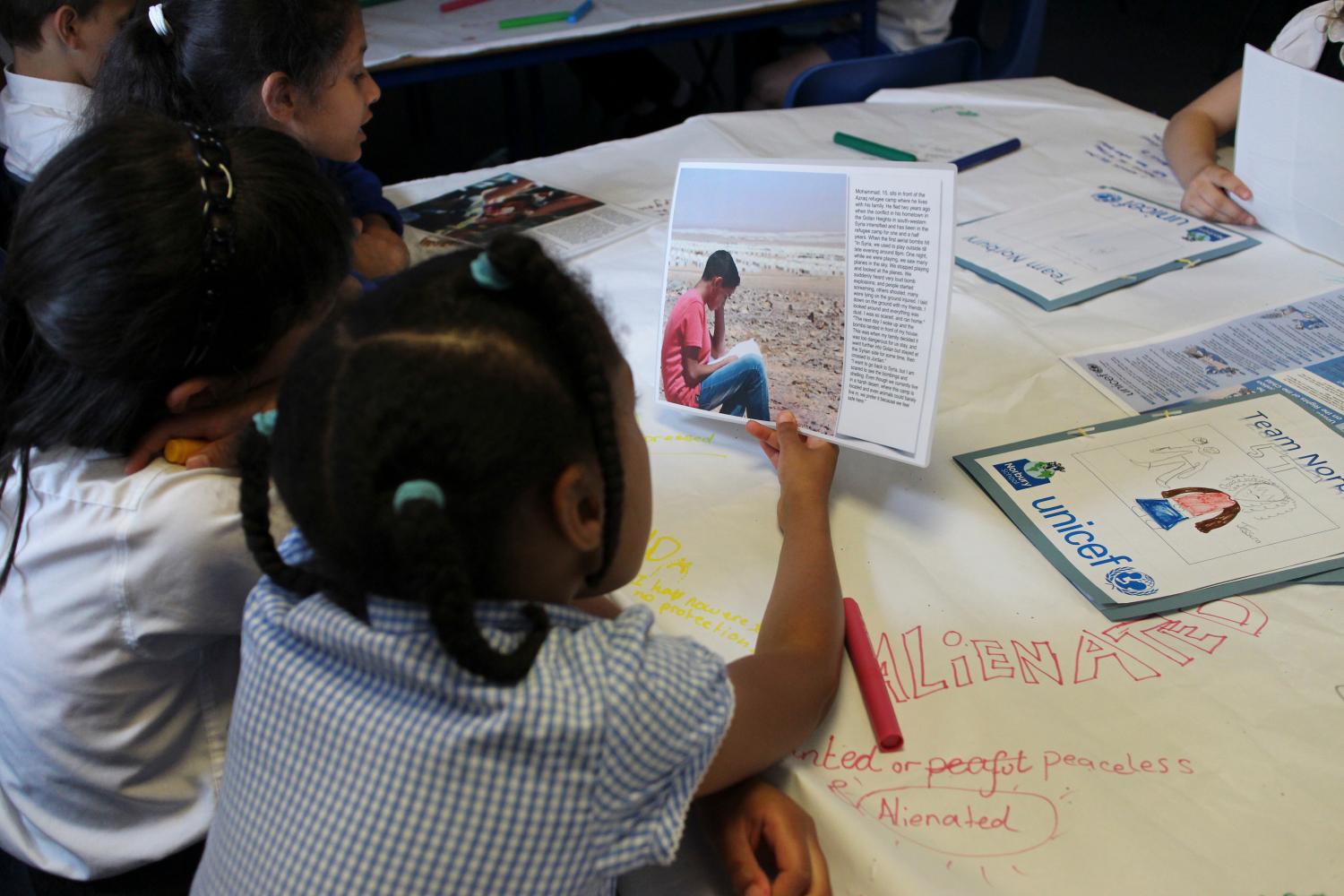EXECUTIVE SUMMARY
Child poverty rose in 2010 as the nation continued to feel the recession’s effects. Forty-four percent of children were living in families with incomes below 200 percent of the poverty level — up from 42 percent in 2009. Yet, public spending on children may be in jeopardy as Congress debates federal spending cuts and states search for ways to trim their budgets. Policymakers and the public need to know how public resources are being spent to understand who will be affected by potential cuts — and what the long-term consequences of reduced spending and investment could be.
Our annual series of Kids’ Share reports has been tracking how children fare in the allocation of public resources. In this groundbreaking report, the analysis is extended for the first time to examine how spending varies by family income. Arguments exist for targeting scarce federal investments to more disadvantaged children, as welfare and Medicaid programs do, and for subsidizing children through more universal programs, such as public education and child credits. This report does not answer the question of how much we should spend on children at different income levels but rather tracks how spending is allocated.
Our most in-depth analysis focuses on federal expenditures, but we also look at spending by states and localities. We estimate spending on children largely by the amount a family receives because it has a child. Low-income children in this report are defined as children age 18 and younger in families with incomes less than twice the federal poverty level (200 percent of FPL) or about $34,000 for a family of three in 2009.
During the past 50 years, the federal government has devoted a considerable share of spending on children to those in low-income families. Analyses of federal spending in 2009, the most recent year for which income data were available, reveal the following:
- Low-income children, who make up 42 percent of the child population, received 70 percent of all federal spending on children in 2009. The federal government spent $291 billion on low-income children in 2009 — more than twice the $127 billion spent on higher-income children.
- Federal expenditures on children for health, nutrition, social services, housing, and training are strongly targeted toward low-income children because these programs are largely means tested. We estimate that low-income children receive 99 percent of housing expenditures, 98 percent of expenditures on nutrition, 97 percent of health expenditures, and 94 percent of expenditures on social services.
- In contrast, federal education spending is split fairly evenly, with 55 percent going to children in low-income families and 45 percent going to higher-income children.
- Spending on children through income security programs, such as cash welfare and Social Security, also is less targeted than most other spending categories, with two- thirds going to low-income children and one-third to higher-income children. While Temporary Assistance to Needy Families (TANF) and Supplemental Security Income (SSI) benefits are heavily targeted to lowincome children, Social Security dependent and survivors benefits are paid out in rough proportion to the child population.
- Medicaid is the biggest federal program for low-income children. In 2009, Medicaid spent $68 billion on low-income children, or nearly a quarter (23 percent) of total federal spending on low-income children.
- Although low-income children receive the majority of refundable tax credits, higherincome children receive the majority of tax reductions that subsidize children. One reason for this split is that many low-income families do not owe taxes and cannot benefit from direct reductions in taxes.
- In-kind benefits are more strongly targeted toward low-income children than are cash benefits. For every dollar spent on lowincome children, 68 cents derives from in-kind benefits such as health, nutrition, housing and education; 19 cents from refundable tax credits; 8 cents from monthly cash benefits; and 6 cents from other reductions in tax liabilities. For every dollar spent on higher-income children, 60 cents comes from reductions in tax liabilities, 22 cents from in-kind benefits, 12 cents from monthly cash benefits, and 6 cents from tax refunds.
State and local spending on children is much less targeted than federal spending. Our estimates suggest that less than half (48 percent) of state and local spending on children was directed to low-income children in 2008, the most recent year for which complete estimates were available. State spending on Medicaid, SCHIP, TANF, child care assistance, child welfare programs, and state earned income tax credits is all heavily tilted toward low-income children, but this is balanced out by state and local spending on education, which supports all children. Our state and local estimates for spending on higher-income children may be conservative because data limitations required us to leave out most child-related tax provisions. We make the cautious assumption that education spending is distributed equally per child across both income groups. A more inclusive estimate of state and local expenditures might find less or no targeting toward lowerincome children.
Although our state and local estimates are rough, we combine them with our federal spending estimates to get a more comprehensive view of public spending by income group. When federal, state, and local spending on children (excluding tax expenditures) are taken together, low-income children receive about twice as much, per capita, as higher-income children. The federal government is the junior partner for public spending on children as a whole — federal money accounts for about one-third of all spending on children; state and local spending accounts for the rest. However, for low-income children, our estimates suggest that the federal government shares costs roughly equally with states and localities (45 percent vs. 55 percent). For higherincome children, on the other hand, about 85 percent of public support is state and local, while only 15 percent comes from federal dollars (not counting tax expenditures).
For several reasons, 2009 may not have been a typical year for federal expenditures on children. The recession likely led to more children qualifying for heavily targeted programs, such as Medicaid and the Supplemental Nutrition Assistance Program (SNAP, formerly known as food stamps) — meaning greater federal expenditures. In addition, the American Recovery and Reinvestment Act (ARRA) of 2009 boosted federal spending through Medicaid, SNAP, and other programs benefiting low-income families. Because the size of the low-income population also was also higher in 2009 than in earlier years, we cannot say whether spending per low-income child in 2009 is higher or lower than other years. It will be important to continue monitoring spending on low-income children as federal and state budgets are cut, especially if effects of the recession continue to linger.
The Brookings Institution is committed to quality, independence, and impact.
We are supported by a diverse array of funders. In line with our values and policies, each Brookings publication represents the sole views of its author(s).





